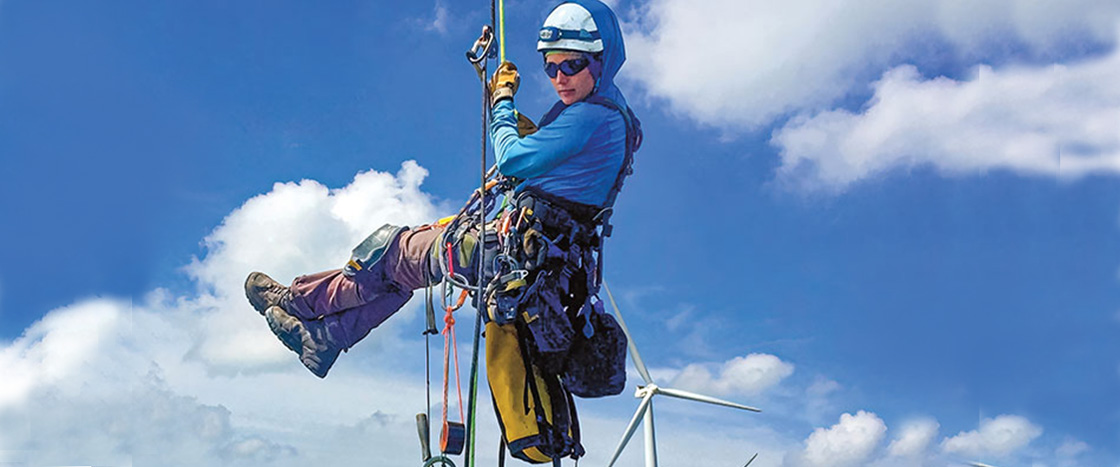SEQUOIA HAUGHEY
Kilroy repairs the tip of a 140-foot- long blade high above a cornfield in Illinois.
At 107 meters (350 feet) above the ground, everything is quiet except the rush of the wind. Jessica Kilroy spends so much time at this height that her face is often red from windburn. She has been going outdoor rock climbing since she was 4. But today, Kilroy isn’t scaling a cliff. She’s at the top of a wind turbine! Wind turbines harness energy from the wind and convert it into electricity. As the wind turns the blades, a rotor spins a shaft inside the turbine. A generator converts this motion into electricity (see How Wind Farms Work).
Wind power is a type of renewable energy. That means it will never be used up. Most countries produce electricity by burning fossil fuels, such
as coal, oil, or natural gas. These fuels come from the ground and will eventually run out. Wind turbines also don’t produce air pollution, while burning fossil fuels does.
If a turbine’s blades get damaged, they can’t catch the wind as well. When this happens, it’s Kilroy’s job to fix them. As a rope access technician, she uses rock-climbing gear to get to the blades. Then she uses construction tools to repair the damage. Kilroy recently spoke to Scholastic about her work.
Jessica Kilroy is 107 meters (350 feet) above the ground. Everything is quiet except the rush of the wind. Kilroy spends a lot of time at this height. Her face is often red from windburn. She has been going outdoor rock climbing since she was 4. But Kilroy isn’t scaling a cliff today. She’s at the top of a wind turbine!
Wind turbines harness energy from the wind. They use it to make electricity. The wind turns the blades. A rotor spins a shaft inside the turbine. A machine called a generator turns this motion into electricity (see How Wind Farms Work).
Wind power is a type of renewable energy. That means it will never be used up. Most countries make electricity by burning fossil fuels. These include coal, oil, or natural gas. The fuels come from the ground. They will someday run out. Wind turbines don’t make air pollution. But burning fossil fuels does.
A turbine’s blades can get damaged. Then they can’t catch the wind well. It’s Kilroy’s job to fix them when this happens. She’s a rope access technician. She uses rock-climbing gear to get to the blades. Then she uses tools to repair them. Kilroy recently spoke to Scholastic about her work.


